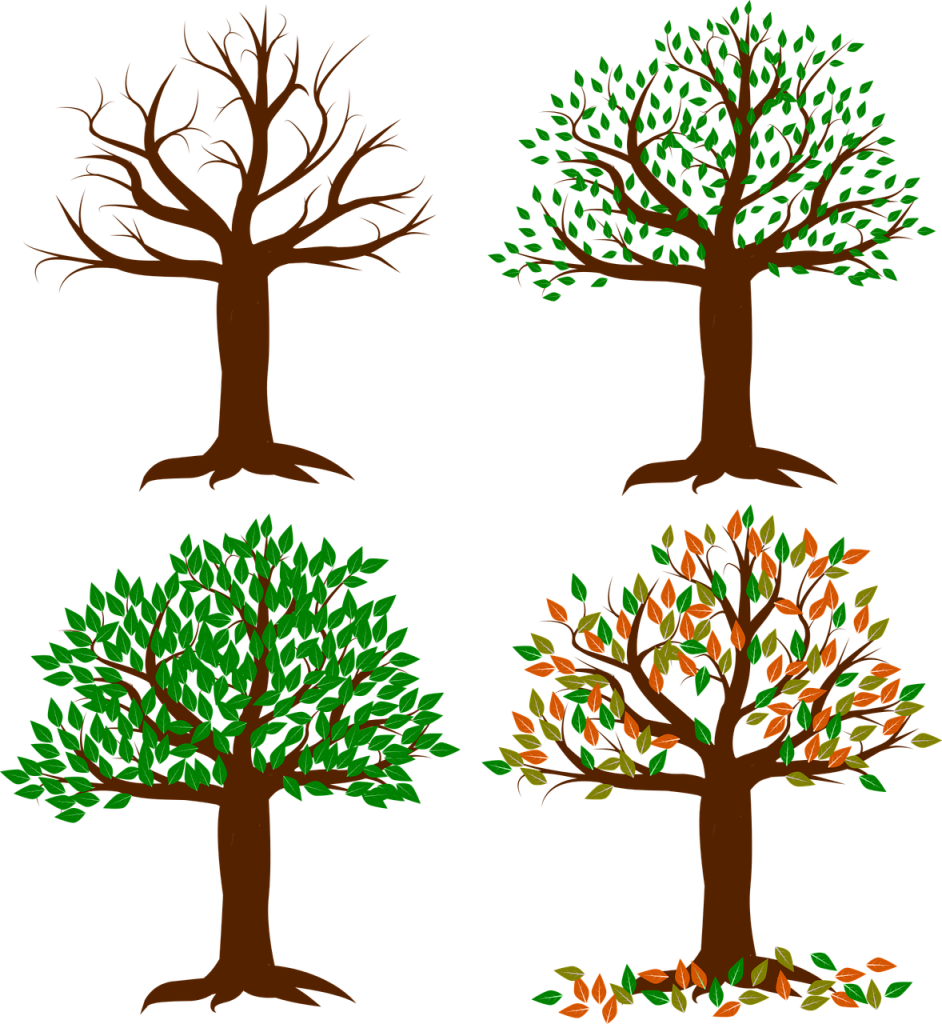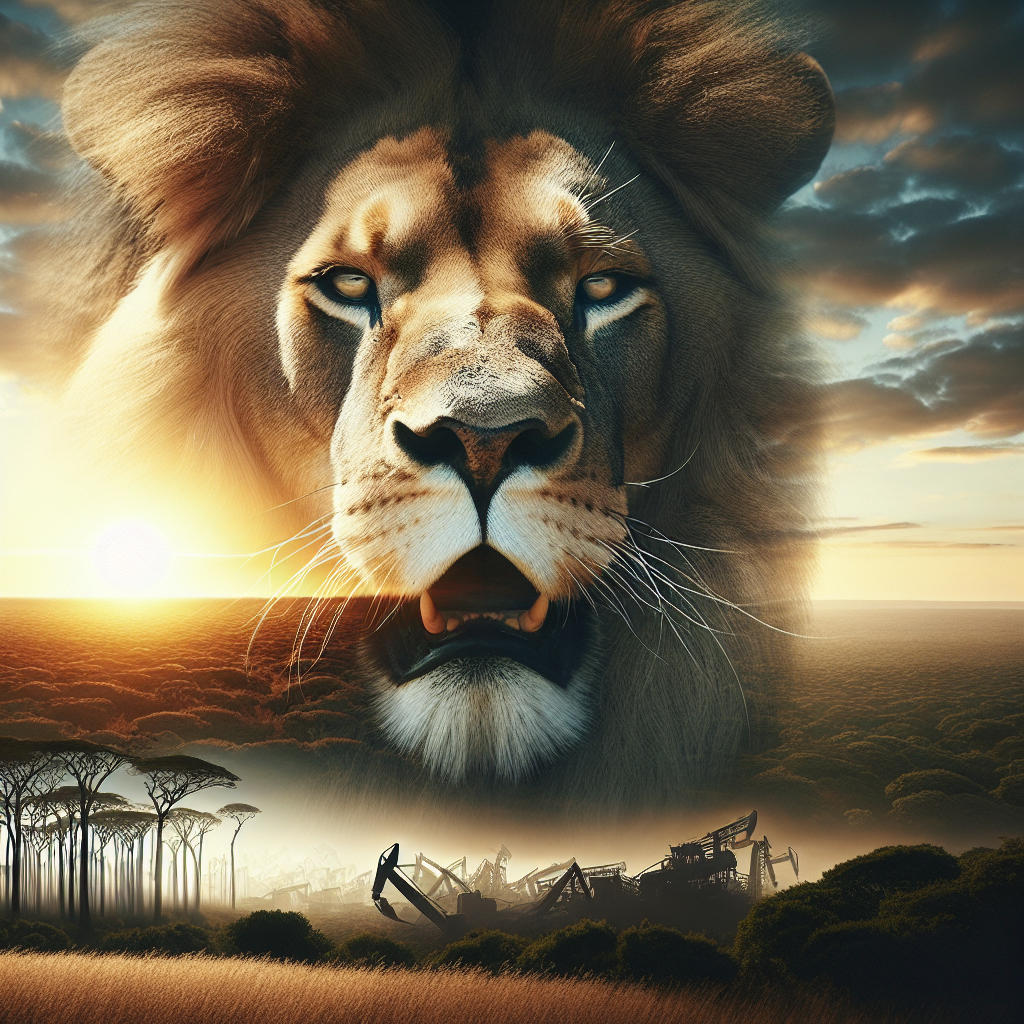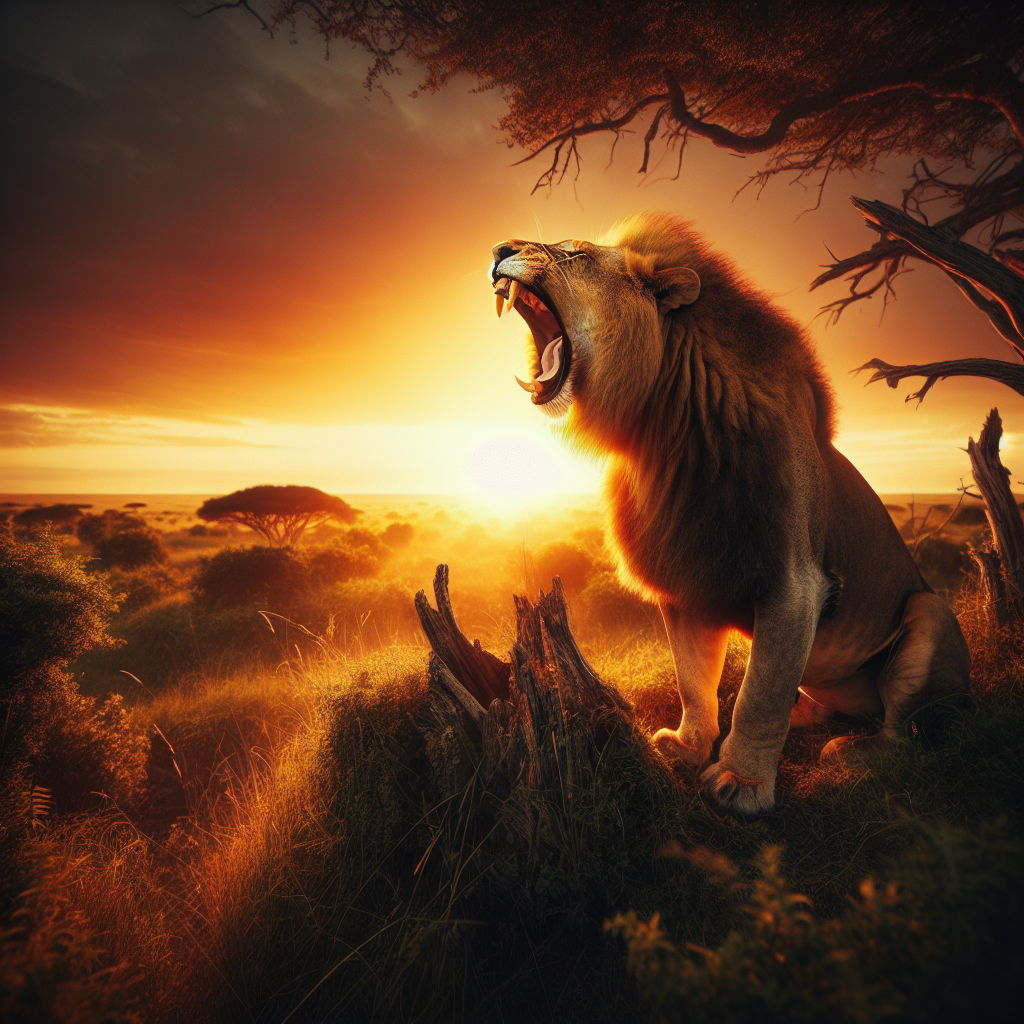Imagine standing on the vast savannah, the golden grass stretching out before you, and the hot African sun beating down on your skin. In the distance, you catch a glimpse of a majestic creature, its golden mane flowing in the wind. It’s the king of the jungle, the lion, and its powerful roar echoes through the air, carrying a message that resonates with all who hear it. In an increasingly threatened world, the lion’s roar serves as a reminder of the urgent need for conservation. In this article, we explore the importance of preserving lion populations and the vital role they play in maintaining the delicate balance of our planet’s ecosystems.

The Lion’s Importance in Conservation
Lions play a crucial role in maintaining the balance and health of ecosystems. As apex predators, they help regulate prey populations and control herbivore numbers, preventing overgrazing and preserving the integrity of the landscape. Lions also serve as indicator species, indicating the health of their habitats. Their presence or absence can provide valuable insights into the overall well-being of an ecosystem.
However, lion populations are facing numerous threats that put their survival at risk. Let’s explore some of the major challenges they face and the impact of conservation efforts in addressing these issues.
Threats to Lion Populations
Lions face various threats that have contributed to a significant decline in their numbers over the years. Habitat loss and fragmentation due to human encroachment are major concerns for lion populations. As human populations expand and agriculture, infrastructure, and settlements spread into natural habitats, lions lose their territory, leading to increased conflicts with humans.
Another significant threat to lion populations is illegal wildlife trade and poaching. Lion parts are highly sought after for traditional medicine, trophies, and cultural artifacts, driving illicit trade and putting immense pressure on lion populations. The demand for lion bones, particularly in some Asian countries, has further escalated the poaching crisis.
Human-wildlife conflict is also a significant challenge. As lions struggle to find suitable habitats and prey, they often come into conflict with local communities. Attacks on livestock can lead to retaliatory killings, further exacerbating the conflicts and straining the relationship between humans and lions.
The Impact of Lion Conservation Efforts
Despite the challenges, there have been concerted efforts to conserve and protect lion populations. National and international conservation organizations, such as the World Wildlife Fund (WWF) and the African Wildlife Foundation (AWF), have been instrumental in driving conservation initiatives. These organizations work towards awareness, research, and policy advocacy to safeguard lion populations and their habitats.
In Africa, where the majority of wild lion populations are found, various conservation projects have been implemented. These projects focus on habitat protection, community engagement, and sustainable management of natural resources. By involving local communities in conservation efforts and providing economic incentives for coexistence with lions, these projects aim to mitigate human-wildlife conflicts and promote long-term conservation strategies.
Community-based conservation efforts have gained recognition for their effectiveness in lion conservation. By involving and empowering local communities, these initiatives create a sense of ownership and responsibility towards lions and their habitats. Community rangers and conservancy programs help monitor and protect lions, ensuring the sustainability of both the wildlife and the communities themselves.
The Symbolism of the Lion’s Roar
The lion’s roar holds significant symbolism, not just in the animal kingdom, but also in conservation efforts. It serves as a powerful call to action, urging us to protect these majestic creatures and the ecosystems they inhabit. The roar resonates with our innate sense of awe and reverence for nature, reminding us of the interconnectedness of all species.
Interpreting the lion’s roar goes beyond its literal meaning. It represents the urgent need for conservation action, inspiring individuals to make a difference and become advocates for change. The roar symbolizes the courage and strength required to stand up against the pressures that threaten lion populations and their habitats.
Conservation campaigns often utilize the power of the lion’s roar to raise awareness and garner support. From documentaries showcasing the beauty and vulnerability of lions to social media campaigns highlighting their conservation status, the lion’s roar helps capture people’s attention and mobilizes them to take action.

Conservation Initiatives to Protect Lions
Conservation organizations and initiatives have been working tirelessly to protect and conserve lions. Collaborations between governments, NGOs, and local communities have been pivotal in these efforts.
National and international conservation organizations play a vital role in driving policy advocacy, raising funds, and coordinating conservation projects. They work towards ensuring the legal protection of lions and their habitats, while also supporting research and monitoring efforts to better understand their needs and challenges.
In Africa, specific lion conservation projects have been implemented to address the region’s unique conservation requirements. These projects focus on creating designated protected areas, implementing anti-poaching measures, and developing sustainable tourism practices that benefit both wildlife and local economies.
Community-based conservation approaches have gained prominence in recent years. These initiatives recognize the importance of involving local communities in conservation decision-making processes. By offering economic incentives and empowering communities to take responsibility for wildlife conservation, these initiatives foster a sense of ownership and promote sustainable coexistence between humans and lions.
Success Stories in Lion Conservation
Despite the challenges, there have been notable success stories in lion conservation. Conservation efforts have led to the recovery of lion populations in specific regions. For example, in protected areas like the Serengeti National Park in Tanzania and the Masai Mara Game Reserve in Kenya, lion populations have rebounded due to effective conservation measures and habitat management.
Conservation programs that focus on tackling specific threats to lions have also yielded positive outcomes. Targeting illegal wildlife trade and poaching through increased law enforcement and international cooperation has shown promising results in curbing the demand for lion parts and reducing poaching activities.
Furthermore, successful collaborative efforts between different stakeholders have played a crucial role in lion conservation. Partnerships between governments, NGOs, local communities, and researchers have allowed for the exchange of knowledge, resources, and expertise. These collaborations have led to more comprehensive and effective conservation strategies, benefiting both lions and the ecosystems they inhabit.

Challenges in Lion Conservation
Despite the progress made, numerous challenges remain in lion conservation. Human-wildlife conflict continues to threaten lion populations, primarily due to competition for resources and retaliatory killings by communities impacted by lion attacks. Addressing these conflicts requires finding innovative solutions that balance the needs of both humans and lions, ensuring the coexistence of both species.
Illegal wildlife trade and poaching remain significant challenges. Efforts must be intensified to combat the demand for lion parts, strengthen law enforcement, and improve international cooperation to tackle criminal networks involved in wildlife trafficking. Additionally, raising awareness about the importance of conserving lions and the consequences of illegal trade is crucial to reduce the demand and support for such activities.
Habitat loss and fragmentation pose long-term threats to lion populations. As human populations continue to grow, it is essential to prioritize habitat protection, restore degraded areas, and promote sustainable land-use practices. By maintaining larger interconnected habitats, lions can thrive and roam freely, ensuring their long-term survival.
Innovations in Lion Conservation
Innovation has played a vital role in addressing the challenges faced in lion conservation. Technology has been instrumental in monitoring and tracking lions, providing valuable data for researchers and conservationists. From GPS collars that track lion movements to camera traps that capture vital information about their behavior, these tools help scientists understand lion populations and devise effective conservation strategies.
Community engagement through education and awareness has also been a key innovation in lion conservation. By educating local communities about the importance of wildlife conservation and involving them in decision-making processes, there is a higher likelihood of success in long-term conservation efforts. Empowering local communities to become stewards of their natural resources ensures the sustainability of conservation initiatives.
Conservation initiatives have also leveraged the knowledge and expertise of local communities to protect lions. Indigenous knowledge, traditional practices, and local ecological knowledge are valuable assets in conservation efforts. By incorporating these perspectives into conservation strategies, there is a greater chance of finding solutions that are culturally appropriate and environmentally effective.

The Economic Value of Lions
Lions hold significant economic value, particularly in the context of tourism and ecotourism. Wildlife tourism centered around lions attracts visitors from around the world, contributing to local economies and providing livelihood opportunities for communities living near lion habitats. Safaris, guided tours, and wildlife photography generate revenue that can be invested back into conservation efforts and local development.
Lions also have economic value by virtue of their habitats. These habitats provide valuable ecosystem services such as water purification, soil fertility, and carbon sequestration. Protecting lion habitats ensures the sustainability of these vital services, benefiting both wildlife and human populations that rely on these resources.
Conservation itself acts as a catalyst for local economies. By creating employment opportunities in conservation-related fields, such as eco-guiding, research, and habitat management, conservation initiatives contribute to local economies and reduce reliance on activities that may harm lions and their habitats, such as unsustainable agriculture or poaching.
Collaboration and Cooperation in Lion Conservation
Effective lion conservation requires collaboration and cooperation at various levels. Partnerships between governments, NGOs, and local communities are crucial in developing comprehensive conservation strategies. These partnerships ensure that conservation efforts are integrated, sustainable, and address the needs of all stakeholders involved.
Transboundary conservation efforts hold immense value for lions, considering their wide-ranging nature. These initiatives focus on protecting lion populations across borders, recognizing that these majestic creatures do not adhere to man-made boundaries. Cooperation among neighboring countries is vital in ensuring the connectivity and genetic diversity of lion populations.
International agreements and conventions play a significant role in lion protection. Treaties such as the Convention on International Trade in Endangered Species (CITES) provide a framework for regulating and monitoring the trade of lion parts and products. These agreements facilitate global cooperation and foster a shared responsibility for the conservation of lions and other endangered species.

The Role of Education and Advocacy
Education serves as a powerful tool for promoting conservation awareness and fostering positive attitudes towards lions. By educating communities, especially children, about the importance of conservation and the value of lions, we can instill a sense of stewardship and responsibility for the environment. Educational programs can raise awareness about the threats facing lion populations and highlight the role individuals can play in conservation efforts.
Community engagement and empowerment are essential in creating a sense of ownership over lion conservation. By involving local communities in decision-making processes and providing them with the resources and capacity to actively participate in conservation initiatives, we can ensure the sustainability and long-term success of these efforts. Communities that benefit from conservation are more likely to become active advocates for the protection of lions and their habitats.
Legislative advocacy is another crucial aspect of lion conservation. By advocating for stronger legal protection, stricter enforcement of anti-poaching measures, and sustainable land-use policies, we can create an environment that supports lion conservation at a systemic level. Legislative frameworks that prioritize environmental protection and address human-wildlife conflicts can significantly contribute to the long-term survival of lions.
Looking Ahead: Future Challenges and Opportunities
As we look ahead, it is essential to develop sustainable conservation strategies that ensure the long-term success of lion populations. This requires addressing the root causes of the challenges lions face, such as habitat loss, human-wildlife conflict, and poaching.
Incorporating local communities in decision-making processes is crucial for the success of conservation initiatives. By engaging communities in the design and implementation of conservation programs, we can gain valuable insights and foster a shared responsibility for lion conservation. Empowering communities to actively participate in conservation efforts will lead to more effective and sustainable solutions.
As the world changes, so too must our conservation strategies. Climate change, urbanization, and globalization present new challenges and opportunities. Conservation innovation will play a pivotal role in adapting to these changes. Embracing new technologies, harnessing the power of social media, and leveraging local communities’ knowledge are key to addressing emerging threats and finding innovative solutions for lion conservation.
In conclusion, the lion’s importance in conservation cannot be overstated. As a keystone species, lions play a crucial role in maintaining the balance and health of ecosystems. However, they face numerous threats, including habitat loss, illegal wildlife trade, and human-wildlife conflict. Conservation efforts, through national and international organizations, community-based initiatives, and collaborative partnerships, hold the key to preserving lion populations and their habitats. By engaging in education, advocacy, and innovative conservation practices, we can ensure the survival and flourishing of these magnificent creatures for generations to come.

